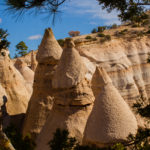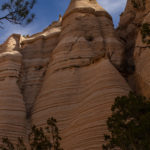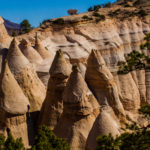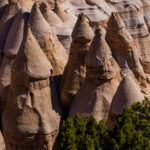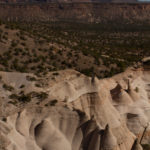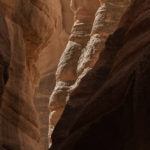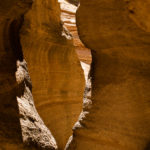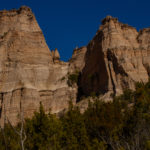The Albuquerque/Santa Fe geological area is one that is defined, in no small part, by extreme volcanism. Remnants of volcanoes are clearly visible in any direction from our home here. The earths most powerful volcanoes are defined by the Volcanic Explosivity Index and range on a scale from VEI O to VEI 8 with 8 being the largest in terms of duration and amount of material ejected.
Wikipedia has an interesting article that shows the largest VEI 8 & 7 supervolcanoes here. I was shocked to see that Yellowstone boasts 4 of the top 12 VEI 8 eruptions and 3 of the top 28 VEI 7 eruptions billowing out a total of 8,780 cubic kilometers of the earths insides. That’s a lotta dirt and according to the recent program Epic Yellowstone, featured on the Smithsonian channel, it ain’t done yet! My interpretation of the Wiki data is that Yellowstone is the worlds undisputed leader in creating crustal chaos on the planet. La Garita, not far north of Albuquerque in the southern Rocky Mountains holds the all time record of a single eruption at 5,000 cubic kilometers. Wow!
Back home and from our back door and looking to the north, one can see the Valle Caldera, a cooled off VEI 7 super volcano. The Valle Caldera burped up 600 cubic kilometers of the earths guts between 1 and 2 million years ago, according to the Wikipedia article. That’s no Yellowstone but it’s still no mean feat. The most prominent landmark in the caldera that we see from ABQ is Redondo Peak which is classified as a resurgent dome – largest of many in the caldera and an impressive volcano in its own right – that erupted and built itself up after the 12+ mile wide caldera collapsed in the last super eruption. Another super good article about the caldera can be found at the New Mexico Museum of Natural History & Science.
Flying over the caldera in a small plane is awesome and gives you some feeling of just what this must have been like when it exploded. The Valle Caldera National Preserve now occupies the floor of the collapsed caldera and is famous for it’s resident elk herd and it’s Hollywood history. Recently, Claudia & I decided to investigate one of the eroded southern flanks of this massive volcano – an area called Kasha Katuwe Tent Rocks National Monument. This is a sacred place for the Cochiti Pueblo, a community of native Americans that do a great job of operating the monument in conjunction with the U.S. Bureau of Land Management and whose community you must pass through to get to the park.
The tent rocks are a phenomena laid bare by erosion after massive layers of ash were belched up from the Valle Caldera and were deposited and cemented into rock of various densities by chemicals, temperature and pressure. Then, as water and wind exacted their torture on the ash based stone, interesting shapes resulted that confound and amaze anyone that ambles through this stretch of of exposed earth and contemplates its origins. We recently spent the morning doing just that and saved a few shots of this special remnant of one of the worlds largest supervolcanoes.
- Shot 1
- Shot 2
- Shot 3
- Shot 4
- Shot 5
- Shot 6
- Shot 7
- Shot 8
- Shot 9
- Shot 10

